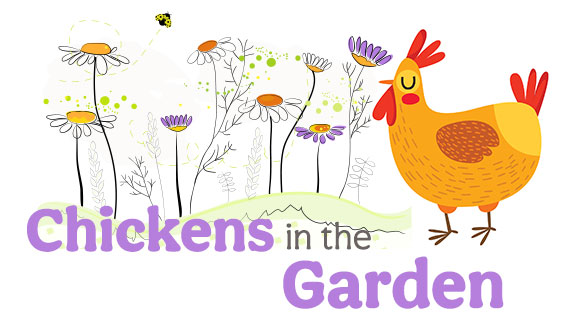Incorporate water conservation practices for your plants and chicks
In the Midwest and large areas to the West, we’re in full summer heat mode. Temps could reach over 100 degrees this week — a record for mid-June. Rain has been sparse in Nebraska, and many localities in the Midwest are starting to ration water. While watering your garden is important—and providing fresh water to chickens is mandatory—watering correctly is just as important to conserve this limited resource.
Timing Your Watering
While we might think we need to water in the heat of the day when the sun is the hottest, this is the worst time of day to water plants. The hotter the sun, the quicker water will evaporate. Water will be wasted, as it will take more to totally wet the root system.
Watering in the early morning or late evening is the best time to water plants, as the roots will have a chance to absorb more water without fighting evaporation from the sun and heat.
Low and Slow
A soaker hose is a great way to get water to the base of plantings. Using a soaker also distributes the water more evenly and at a slower rate, giving the roots of plants a more thorough soaking.
While you can use an overhead sprinkler or hose, some plants, like roses and tomatoes, don’t like overhead watering, as this leaves the plant susceptible to black spot and other fungal diseases.
How Much to Water
In the heat of the summer, we often water in the morning and in the evening, just to make sure our plants don’t burn up. However, it’s possible—even in the hottest weather—to overwater. Only water when your plants need it. The best way to judge the moisture level is the screwdriver test. If a screwdriver inserted into the ground comes up with moist soil, the plant doesn’t need additional water. Water only when the screwdriver comes up clean with no wet dirt.
It’s actually best to water fewer times per week, but with deeper saturation. Watering 3 or 4 times per week, low and slow, so that the roots will grow deeper will keep the roots from drying out while conserving water.
Sunscreens
My plants and chickens can get beaten down by the hot sun, so when the temps soar, I pull out my sun sail. This large, triangle-shaped tarp made from durable UV fabric helps to shade too-sunny spots. I use mine to shade my sensitive hostas as well as the chicken run from the hot afternoon sun. It’s about a 16-foot triangle, which shades a large area. I purchased mine at a local Menards, but they can be found at many box stores and online.
Watering Trees and Shrubs
The best time of year to plant trees and shrubs is in the spring and fall when the temps are cooler. However, we don’t always have the luxury to plant during those optimum times of year if stock isn’t available. If you have to plant during the summer, the rule of thumb for watering newly planted trees and shrubs is, for the first 2 weeks, water daily, applying 1-1.5 gallons per inch of stem caliper at each watering. At 3 to 12 weeks, water every 2 to 3 days. After 12 weeks, water weekly until the roots are established (University of Minnesota Extension).
When watering, place the hose several inches away from the trunk. While it seems counterintuitive to water away from the trunk, you want the root ball to absorb the moisture, as the roots will grow toward the water. This will help the roots grow out and establish sooner than soaking the ground only around the trunk. But again, if possible, wait to plant trees and shrubs until the cooler fall weather.
Water Options
I have rain barrels situated by my ornamental beds. They are connected to the gutters coming off my roof eaves. I have the barrels sitting high enough that I can sit a 5-gallon bucket under the spigot. I also have the option to attach a soaker hose to the rain barrels for watering my gardens. I water all of my gardens with rain barrel water, and luckily, they’ve rarely ran dry.
Water for Chickens
Watering your garden from a rain barrel is a great way to utilize run-off and conserve water resources. However, avoid using rain barrel water for animal drinking water. The runoff from roofs can contain toxins from pesticides and other contaminants, so it shouldn’t be considered safe drinking water. While many websites say roof runoff is safe to drink for small animals, I live surrounded by corn and soybean fields that are regularly sprayed with chemicals. The drift can settle on roofs, then leach into the rain barrel water runoff. While roof run-off might be okay to drink in some urban areas, I’d rather be safe than sorry.
Water Conservation
Apply a 2 to 3-inch even layer of mulch around the base of plants, trees, and shrubs (avoid the volcano method of mounding up around tree trunks!). This will not only help to keep the soil moist, but will also insulate plantings from the heat and even winter freezes. When mulching trees, always keep mulch several inches away from the trunk to prevent insect damage and decay.
I incorporate several types of mulches in my yard: grass clippings, pine shavings (from the coop), straw (from the chicken run), leaves, and hardwood mulch. All will aid moisture retention and reduce the need for watering.
While we have to keep our pets and gardens watered, it’s just as important to use our water resources wisely. Only water when needed and try to incorporate a few conservation practices into your gardening and chicken keeping now so we can all enjoy the precious resource for generations to come.
